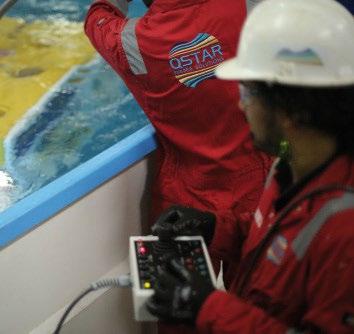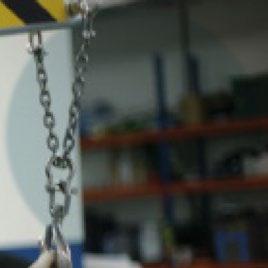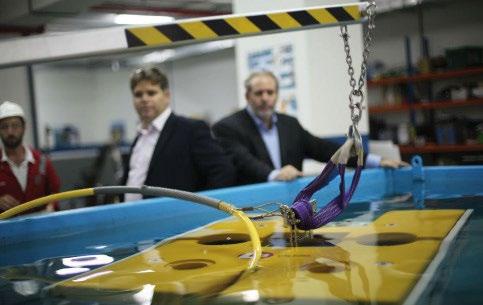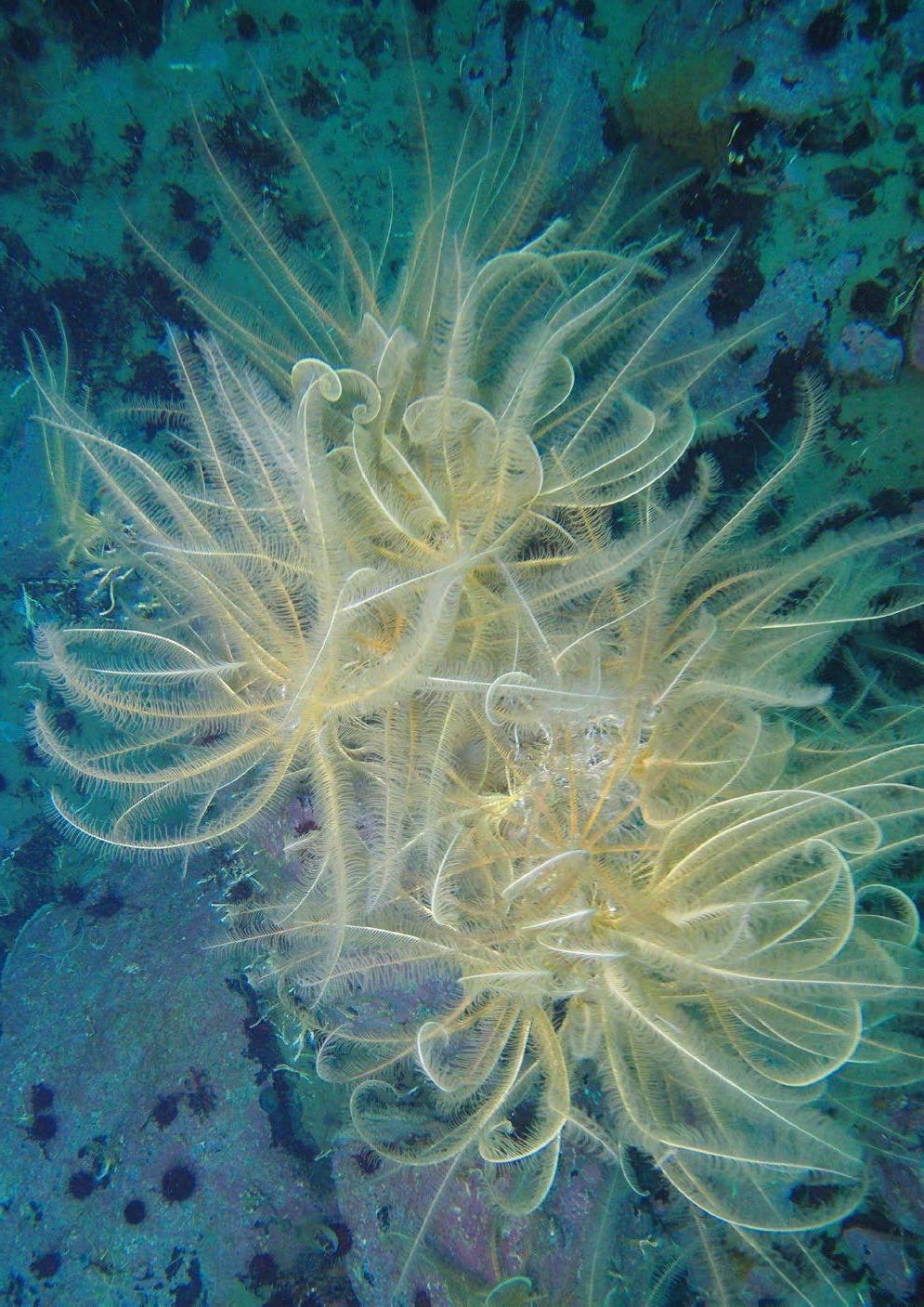
6 minute read
Ice-o-Pod Exploring Antarctica’s Under-Ice Marine Life
THE ICE-O-POD
EXPLORING ANTARCTICA’S UNDER-ICE MARINE LIFE
Advertisement
By Glenn Johnstone and Jonny Stark, Australian Antarctic Division
A small remotely operated vehicle (ROV) nicknamed the ‘Ice-o-pod’ has revealed colourful and diverse sea floor communities under the sea ice around the Vestfold Hills, near Davis research station. The research, conducted as part of environmental surveys for the Davis Aerodrome Project (Australian Antarctic Magazine 37: 2-5, 2019), discovered a range of communities and rarely encountered species.
These beautiful crinoids or feather stars in Ellis Fjord, filter plankton using their feather-like arms. (Photo: Glenn Johnstone/Jonny Stark)
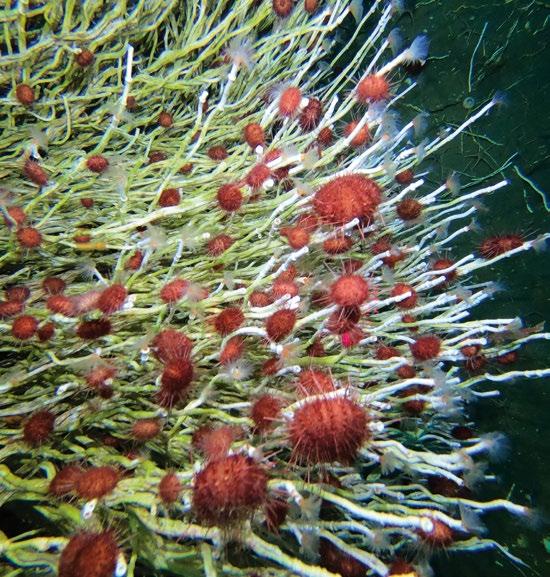
The 35 centimetre-wide ROV was designed to fit down a 40 centimetre-wide hole. (Photo:Jonny Stark)

These dense colonies of the tube building polychaete worm, Serpula narconensis, form reefs that extend for kilometres around Ellis Fjord, generally on slopes between depths of five to 35 metres. (Photo: Glenn Johnstone/Jonny Stark)

Drilling a hole through up to 1.9 metres of sea ice was back breaking work. Photo: Glenn Johnstone
The Ice-o-pod proved to be a logistically efficient way of exploring under-ice habitats and conducting quantitative photographic surveys of sea floor communities in the Davis region. Most sites we visited during the 2019–20 summer have never been explored, and much of what we saw was Ice-o-pod was attached to a 300 metre-long tether and to operate the ROV, providing protection from the freezing
unexpected, including extensive polychaete reefs.
The ROV surveys were undertaken to inform a Comprehensive Environmental Evaluation for the Davis Aerodrome Project and were part of broader survey and sampling work of lakes, vegetation, seals, and seabirds.
The benthic marine program visited 28 sites and collected macroinvertebrates from the sea floor, sediment profiles for chemical analysis, and seawater and sediment samples for environmental DNA (eDNA). We conducted ROV surveys at tween specific depth intervals of four to six metres, 12 to 15
10 of these sites, which ranged from Hawker Island and El lis Fjord in the south, to Bandits Hut in the far north of the Vestfold Hills.
All our sites were covered by between 1.6 and 1.9 metres of coastal marine fieldwork; getting to the water in the first place. The 35 centimetre-wide Ice-o-pod was specifically designed to fit down a 40 centimetre wide access hole, drilled through the sea ice using an easily transported post hole drill. But it was hard work, particularly after the first metre, when a second metre-long auger section had to be added. The torque generated by over 1.5 metres of auger in a sea ice hole filled with ground-up ice and slush was unbe lievable. It was backbreaking work and our record of eight holes in one day isn’t one we’ll try to beat in the future.
After almost an hour of ROV setup and pre-dive checks, the our control centre – a laptop and X-box game controller. These were housed on a portable table with a custom-built vinyl cover to block out the high ambient light. The back of a hägglunds made an excellent shelter from which to wind blasting across the sea ice. The Ice-o-pod was easily manoeuvred down the access hole and, after a series of inwater checks, went to work surveying the sea floor.
Photoquadrat surveys were conducted by driving the ROV in a series of transects, either down-slope (between approximately 3 and 45 metres depth) or across-slope, besea ice, presenting one of the key challenges for Antarctic
metres and 20 to 25 metres.
Transects were driven at approximately one metre above the sea floor using an on-board altimeter, while two down ward facing GoPro cameras captured video and photos. The sea floor was illuminated by four 1500 lumen lights, while a laser scaler projected points 100 millimetres apart onto the sea floor within the area imaged by the front GoPro. Main

taining a steady height above the sea floor was tricky as many of the sites had complex topographies, particularly on steep boulder-covered slopes.
The Ice-o-pod performed superbly, allowing us to capture photoquadrats of known area, thanks to the laser scaler, within which we can identify and count the organisms liv ing on the sea floor. Importantly, quantifying diversity and abundance in this way allows us to compare the composi tion of these communities spatially, between sites, and to monitor how they change over time.
The images we captured revealed colourful, diverse and complex communities, with every site providing new and unexpected surprises. The polychaete reefs in Ellis Fjord were a particular highlight. These dense colonies of the tube building polychaete worm Serpula narconensis form reefs that extend for kilometres around the fjord and gen erally occur on slopes between depths of five to 35 metres. Like reefs anywhere, they provide a complex habitat for a diversity of other organisms, including sponges, ascidians, sea cucumbers and large numbers of the common red ur chin Sterechinus neumayeri.
Polychaete reefs were also found in Long Fjord, although not in as large congregations, and we found small colonies of S. narconensis far to the north, in the steep rocky bays near Bandits Hut.
Another surprise was the presence of three species of cri noids (feather stars) that we haven’t seen around Davis before. These strangely beautiful echinoderms move around the sea floor filtering plankton from the water column with their feather-like arms.
It wasn’t all plain-sailing however, as the Ice-o-pod had a few teething problems that only Antarctic conditions can induce. Sealant used in some of the cable housings cracked or shrank in the very cold Antarctic water (-1.85°C), bringing our first dive to an abrupt end after only 10 minutes. These very hard to find leaks almost derailed the season but with some relent less detective work in the lab and the application of lots of Sikaflex we fixed the problem and operations resumed.
This first summer of work proved that the Ice-o-pod is a su perb tool for exploring under-ice habitats with a small team and relatively simple logistics. Importantly, it also captured high quality imagery that will allow us to determine how Antarctic marine communities may change over time – vital for future monitoring efforts.
The Ice-o-pod is also a highly adaptable research platform that can be modified to provide upgraded or new capa bilities. ROV control and data collection software is rapidly evolving and a range of potentially useful sensors are becoming smaller and easier to attach. In the coming year we’ll use this flexibility, along with the lessons learned this summer, to improve the Ice-o-pod’s capability and per formance as an exploration and survey tool and to meet emerging research needs.
This article is reproduced from the Australian Antarctic Magazine, Issue 38 (2020), published by the Australian Antarctic Division – www.antarctica.gov.au/magazine

Vast numbers of holothurians, or sea cucumbers, were found in Ellis Fjord. (Photo: Glenn Johnstone/Jonny Stark)

A dense cover of epifauna on a boulder in Shirokaya Bay, including various species of sponges, ascidians, feather worms and bryozoans. (Photo: Glenn Johnstone/Jonny Stark)

Dr Jonny Stark with the ROV and its control centre, in the back of a hägglunds. (Photo: Glenn Johnstone)


